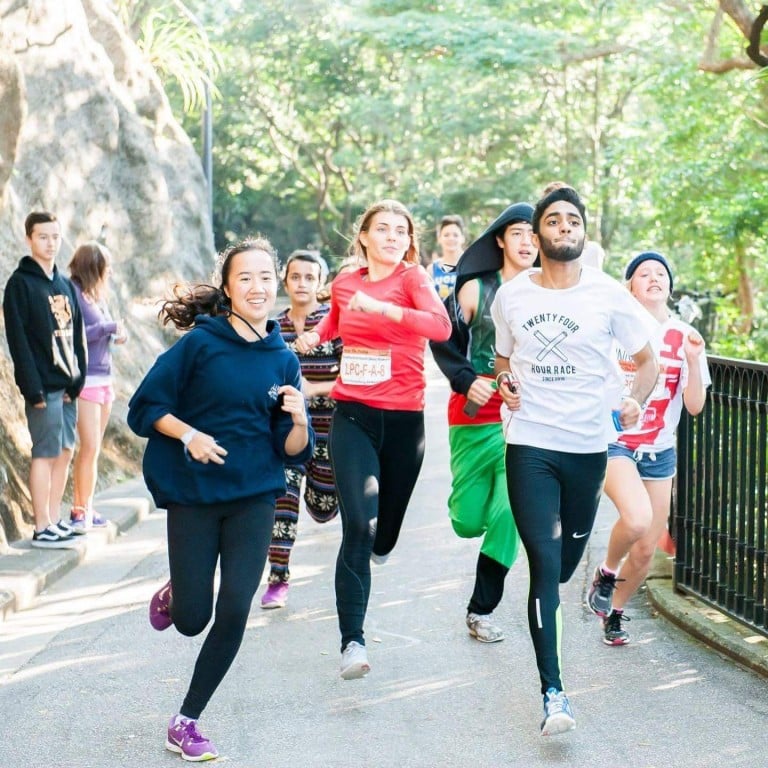
Hong Kong students run round 400m track for 12 hours, raising money for anti-slavery charity
- Hongkongers started a 24-hour race in 2010, which now takes place in 14 cities around the world
- The race has been cut in half this time because of permit issues, but will return to its full length in November
Hundreds of Hong Kong schoolchildren will run round a 400m track for 12 hours on Saturday, as they aim to raise money for an anti-slavery charity.
Instead of doing a set distance as fast as possible, the runners will go as far as possible in the time allowed, competing in teams of eight, with one member on the track at all times while the others rest.
There will be two winners, the team that goes the furthest and the team that raised the most money for the Running To Stop The Traffik charity.
Usually a 24-hour event around The Peak, this year it has moved because of permit restrictions related to Covid-19 and will now be held at Hong Kong Island School, with the race starting at 8.30am.
“It will be quite nice as it’s just a circle, so people will have to mingle,” Ava Singer, one of the race directors, said. “Plus, we’ll have loads of entertainment. I think it’s a great time to meet kids from other schools too.”
Organised by the pupils themselves, 16-year-old Singer is one severa teenagers on the committee.
“It’s defiantly going to be a bit different because it’s going to be 12 hours,” she said. “It does have to be strategic. There are no set amount of laps because it’s such a small track. But you should do five to 10 laps then switch. And you have to be doing that for the whole 12 hours.”
Now there are 14 events around the world in Hong Kong, Singapore, Kuala Lumpur, Bangkok, Phuket, Japan, France, Switzerland, three in the UK, San Francisco, New Jersey and Vancouver.

Daniel Hestevold, the charity’s CEO, was part of that first race and helps oversee the students as they organise it every year.
“The race in Hong Kong is crazy,” the 28-year-old said. “Usually, 900 high school students at Lugard Road on The Peak, which is a little insane.
“The kids love it. They hang out with their friends overnight but without their parents. There is adult supervision, but we have special tents for them so they are on their own for the most part. Who doesn’t want to hangout with their friends outside?
“We have to do very little to pump up the atmosphere, they do that on their own. But on top of the we have good food, good music and entertainment during the day.”

The party atmosphere begins to plateau after about six hours when the students realise there is still 18 hours of running left. That is why the organisers switch up the events through the day. There are films, volley ball and other activities to keep the children focused.
Then at midnight, there is a vigil. The organisers summon everyone who is not running and explain the serious nature of the charity.
“We are raising money for victims of slavery, we are running for people we’ll never meet. It is significant. It is a special moment. It is a big turning point for the atmosphere, people are tired and therefore more receptive,” Hestevold said.
The winning team typically runs a marathon each in 24 hours. It is difficult to tell if that will translate onto a track in 12 hours.
But that is not what impresses Hestevold. He is always taken aback by the student committees that nervously apply to organise the event in the summer, and feel empowered by the time they see the fruits of their labour.
There are 400 student committee members for all the events around the world.
“Seeing them on race day, with the confidence, knowing that if they put their mind to something they can do it,” Hestevold said. “People right off the up coming generation, but I think it is because they met the wrong people.”

